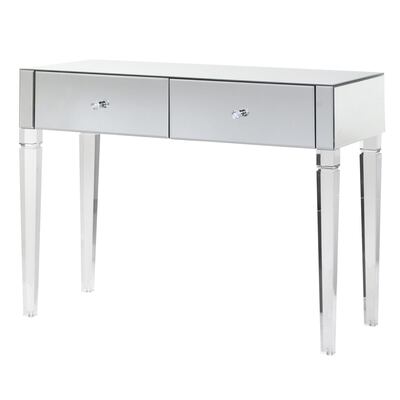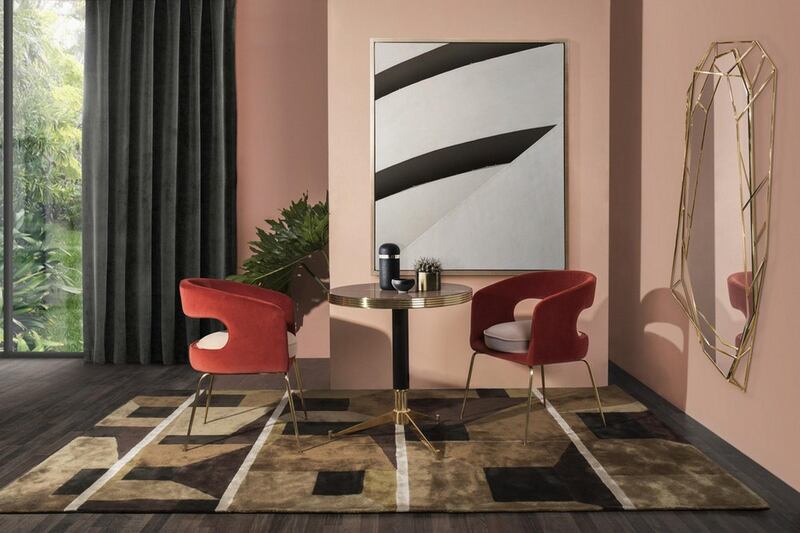A small apartment can feel a bit cramped at the best of times. If you are now working from home, you might find yourself dreaming of escaping to a bigger place once things return to normal. Until then, here are some other options to make your space feel roomier.
Go big on your accessories
The temptation when you are in a small apartment is to do it up with similarly sized accessories to avoid swamping the space, but the opposite is actually true. Small items can give a room a crowded, cluttered feel while having little impact stylistically. Instead, go for a smaller number of larger items to create a more finished look that draws attention away from the size of the room.
This goes for paintings, too. A bold statement piece is going to be far more effective than cluttering your walls with lots of smaller frames. The exception is if you can draw together a collection to create a single unit, by choosing frames of a single colour, for example.
The “think big” policy can even apply to furniture. Not that you want to buy anything bigger than you need, but a few large items will look more pleasing in a small space than a larger number of wee ones. For example, a modular sofa will ultimately take up less space than a sofa plus several armchairs.
Let the light in and through
The more light you can get into your apartment, the less cramped it will feel. Start with your windows; whatever size they are, use every last inch. That means no heavy drapes blocking out a section on either side. If you love your curtains, get tiebacks so you can keep them out of the way.
Another option is roller blinds that can be retracted out of the way – avoid Roman blinds, though, as these hide too much of the top of the window. You could also ditch the window dressing entirely. If you live on a high enough floor, you will not have to worry about nosy neighbours. Otherwise you could try frosting your glass to ensure you keep your privacy while letting in as much light as possible.
Once light has entered your home, make sure it can travel. This means using plenty of reflective surfaces, such as mirrors, to bounce it around, plus choosing as many glass or clear items as possible, such as Perspex tables and chairs. You can even remove doors to allow light – and your eyesight – to travel beyond the confines of each room, further adding to the sense of space.

Draw your eyes upward …
Interior designers have been using optical illusions for decades. A simple trick to create more space in a room is to give the impression that the ceiling is taller than it looks by drawing the gaze upward.
One way to do this is to paint your ceiling a colour that is darker than your walls, but not so dark that it becomes oppressive. Another way to attract the eyes up is to position curtain poles closer to the ceiling than the top of the window. The vertical line created by the curtain will lengthen the wall, making the ceiling appear higher. Just remember those tiebacks.
… and around the room
Up is not the only way you want to go to create the illusion of space. What you really want is to draw the line of sight as far as possible from where you are standing and make it feel that the room goes on further than it does.
Lighting is a great way to do this. Rather than relying only on an overhead light, which will pool in the centre of the room, use wall lights, desk lamps and uplighters to highlight the edges of the room and define the space more clearly.
Also do not forget about floor space. The more you can see of it, the bigger a room will feel. That is why furniture with legs that raise it off the floor is a good choice, whether that be a sofa, bookcase or chest of drawers.
Be smart with your storage
Unless you are going full minimalist, you will most probably have a fair amount of stuff that needs to be stored. So where to put it? The simple answer is: away. The less clutter you have out on surfaces, the better.
To avoid a small apartment feeling overcrowded, you need great storage. Built-in is ideal and you can use the full extent of a space. If you go custom rather than flat-pack, you can use built-in to make the most of awkward spaces where regular furniture would not fit.
Vertical storage is also popular in small spaces – in other words, storage that does not rely on taking up floor space. How about putting shelves around the top of your walls, near the ceiling, for books? Or suspend pot plants from the ceiling in the corner of a room on brackets.
Finally, do not forget multipurpose items, such as ottomans that open up to become storage chests, or full-length mirrors that open up to reveal a shallow cupboard.
What’s happening in the world right now might be filling you with anxiety, but that is all the more reason to create a home that makes you feel at ease. If you have some time on your hands, applying these space-boosting tips could be just the project you need.






